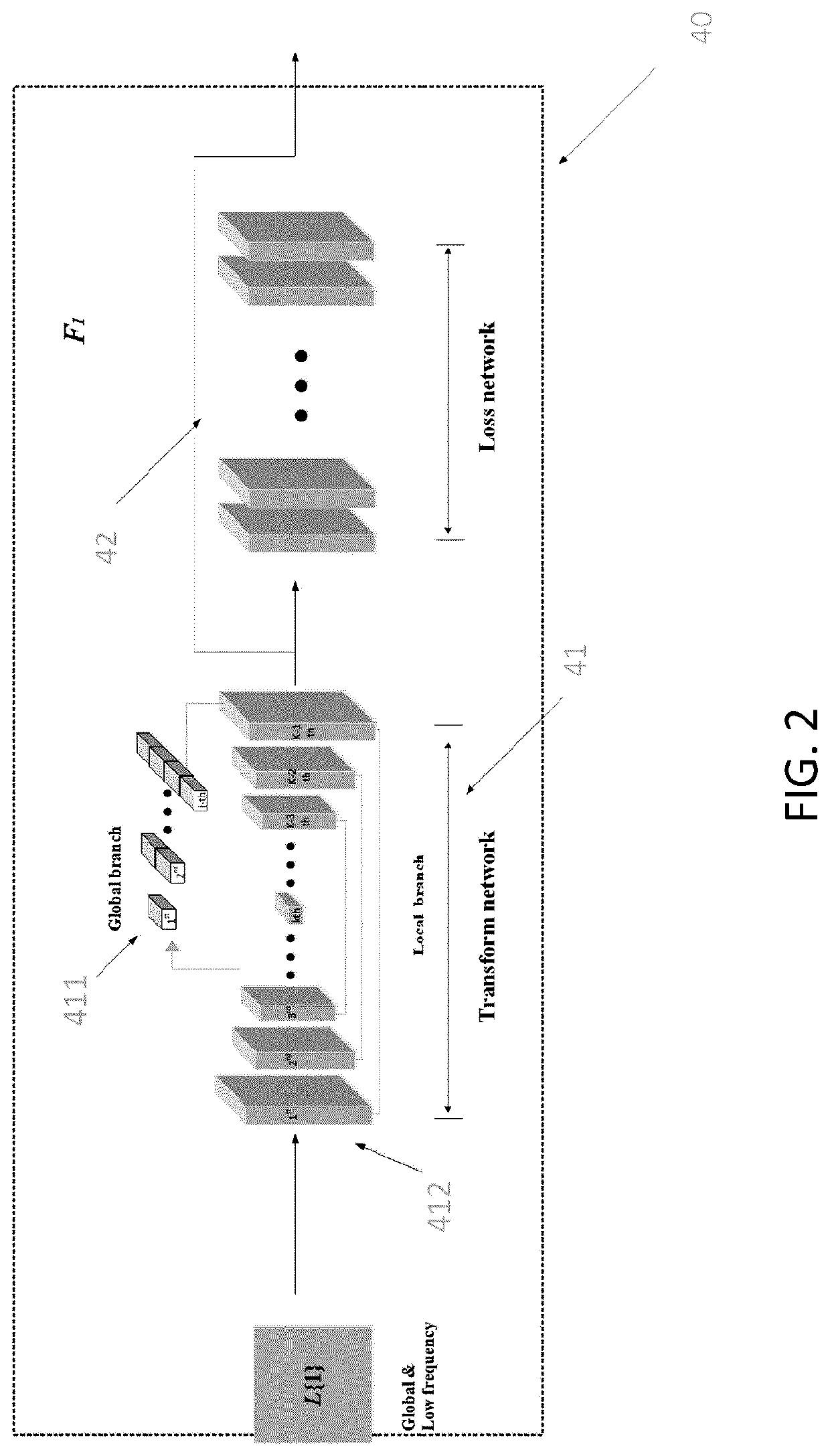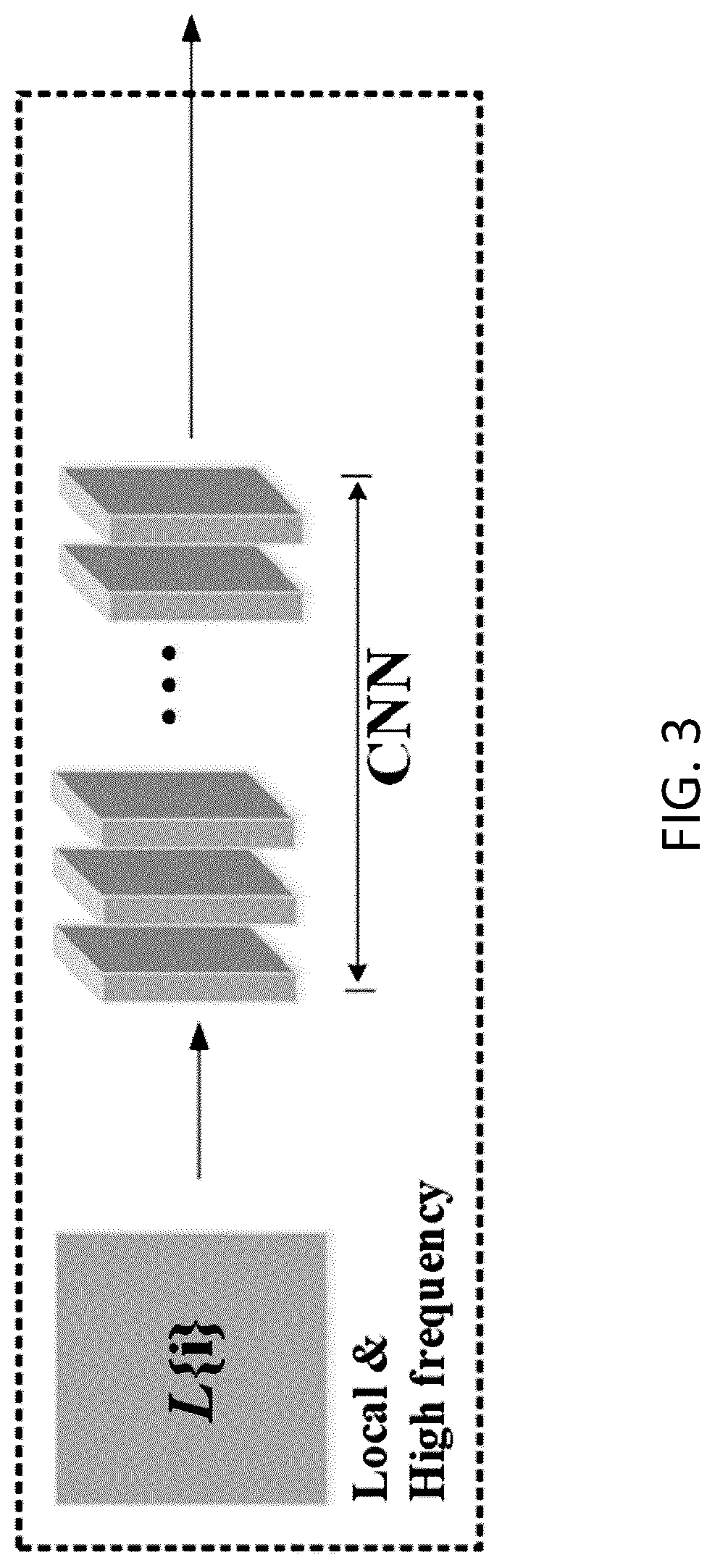Neural network trained system for producing low dynamic range images from wide dynamic range images
- Summary
- Abstract
- Description
- Claims
- Application Information
AI Technical Summary
Benefits of technology
Problems solved by technology
Method used
Image
Examples
Embodiment Construction
[0059]Referring to FIG. 1, a schematic diagram of a system according to one aspect of the invention is illustrated. In this system 10, a wide dynamic range image 20 is converted into a normalized image 30, and this normalized image is decomposed into an n level Laplacian pyramid. Each level of the Laplacian pyramid serves as input into a specific level 40 of the system. At each level, this decomposition (L{n}) of the normalized image 30 is passed through that level's sets of processing layers to produce a transition image 50. The output of this level 40 is then used, along with the transition images from the other various levels, to produce the coarse LDR image 60. The coarse LDR image 60 is then used to produce the final LDR 80 through the fine tone neural network 70.
[0060]It should clear that the second level produces a second transition image and that the third level of sets of processing layers produces a third transition image.
[0061]It should be clear that the various transitio...
PUM
 Login to view more
Login to view more Abstract
Description
Claims
Application Information
 Login to view more
Login to view more - R&D Engineer
- R&D Manager
- IP Professional
- Industry Leading Data Capabilities
- Powerful AI technology
- Patent DNA Extraction
Browse by: Latest US Patents, China's latest patents, Technical Efficacy Thesaurus, Application Domain, Technology Topic.
© 2024 PatSnap. All rights reserved.Legal|Privacy policy|Modern Slavery Act Transparency Statement|Sitemap



